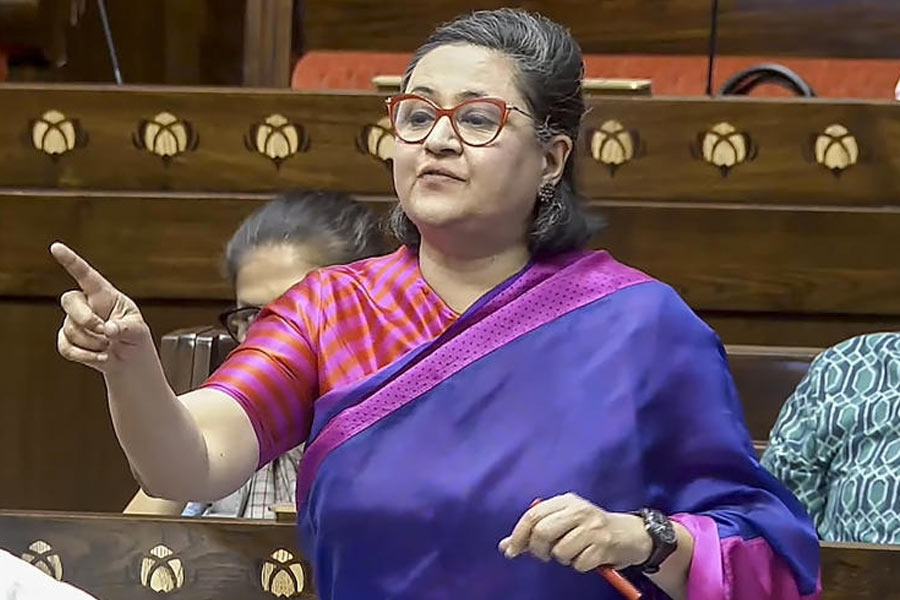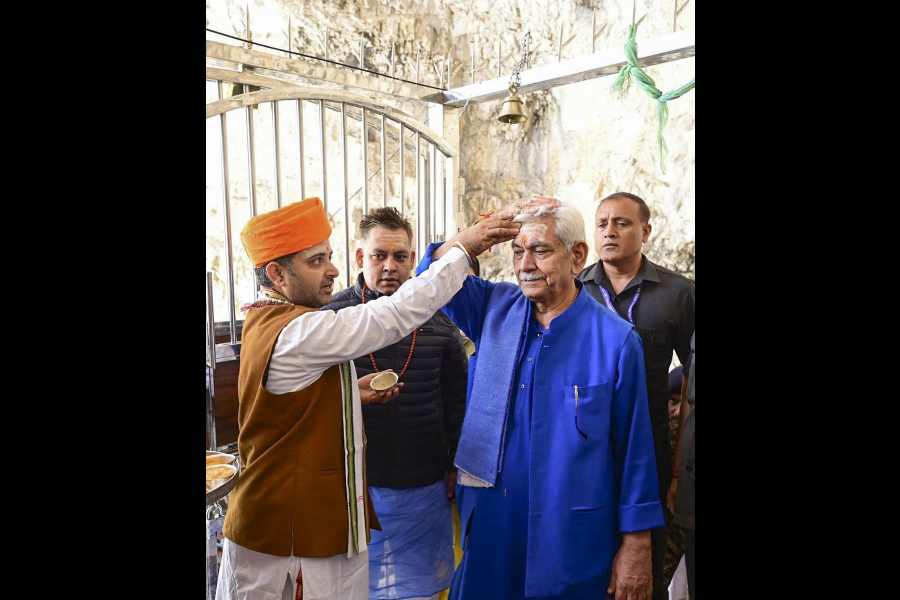 |
| The female Indian Gaur with her newborn while the leopard cat (below) is protective around her kittens at Birsa zoo on Saturday. Telegraph pictures |
Ranchi, April 26: April has not been that cruel to Birsa zoo, after all.
The summer month of excruciating heat has given Bhagwan Birsa Biological Park in Ormanjhi its newest members — a little Indian gaur and three leopard kittens.
The authorities of the state-owned zoo located next to the picturesque Rukka dam shared the good news today.
On April 4, a calf was born to the adult Indian gaur couple. Around a week later on April 10, the female leopard cat, brought from Guwahati along with a male one under an animal exchange programme in March 2012, gave birth to three kittens.
Both births are important for the zoo as these animals come under Schedule I (critically endangered species) of the Indian Wildlife (Protection) Act, 1972, thus commanding higher exchange value compared to other species.
Also, the International Union for the Conservation of Nature (IUCN) has listed Indian gaur in red category, which also stands for critically endangered species, since 1986.
Wildlife experts say that world bodies have started researching to document the pedigree of Indian gaurs.
Zoo vet Ajay Kumar said that the Indian gaur calf is a male while sexes of three leopard kittens are not known yet.
“It generally takes about a month to ascertain the sexes of kittens. A couple of days ago, they started getting active and are playing now. They have also started biting chopped chicken pieces,” Kumar added.
 |
Generally, an adult leopard cat consumes about 500 grams of chicken per day but the vet maintained that they had increased the quantity by 100-150 grams now.
“The mother needs to be stronger now to feed the kittens. Besides chicken pieces, we are giving doses of multivitamins with electrolytes to beat the heat,” he added.
On the other hand, the female Indian gaur, which is a herbivore, is being served galactagogue to increase lactation, informed the vet.
With the new birth, the total number of Indian gaur at the zoo has gone up to five — two male, one female and an adult couple. The number may see a further climb as the female gaur is again showing signs of mating.
“The female, which gave birth earlier this month, is getting closer to her partner. It seems that they have started mating again,” Kumar smiled.
As for the leopard cats, the pair had its first child in June 2012 followed by two more in 2013.
The total leopard cat count at the zoo now stands at eight.
The zoo, spread over 104 hectares, is home to roughly over 1,000 animals of 65-70 species.
Of these, there are around 24 species of protected and endangered animals, including four birds, 15 mammals and eight reptiles. Now, with the four new additions, the total number of exotic creatures in the zoo is around 182.
The female Indian Gaur with her newborn while the leopard cat (right) acts protective around her kittens at Birsa zoo on Saturday. Telegraph pictures











